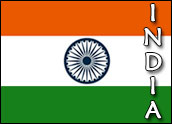
A new call center just opened in Navi Mumbai, India. It won’t be making the headlines for being a new monster facility with impressive clients and well-known managers. But this modest business, Purple Support Services, has more to teach us about call center operations and IT outsourcing than any other center that has opened recently.
What barriers impede the growth of a new, small offshore call center? What does such a venture cost? What is their recruiting position? What were the location considerations? Where is the center headed in the future, and how does that future reflect the rest of the industry?
According to Gina Jones, formerly the operations manager at an InternationalStaff.net contract facility in Hyderabad, India, small facilities starting at the same scale as Purple usually have a lifespan of two and a half months. This contributes to the 90 percent failure rate for commercial call centers in India and makes it harder to distinguish the facilities that are bound to fail from those with healthy outlooks.
In the Talkback section below, readers are invited to provide a prediction about whether Purple will make it through its first two years of operations.
Finding Mahesh
On May 10, 2002, while posting an online ad seeking U.S. salespeople to represent InternationalStaff.net, I read another recruiting ad that had just been posted. A new facility in the center of south India was seeking a training manager.
The position being advertised was in a dusty, isolated textile industrial town called Coimbatore, in the far west of the state of Tamil Nadu. The ad wanted someone who could provide accent training, background information on North American culture, English grammar instruction, and training in customer service skills.
That ad, posted by Mahesh Iyer, read as if the author truly understood what American outsourcing clients need. So I contacted him to ask if I could place outsourcing contracts with that Coimbatore facility. It turned out that the facility was under-funded and was never able to install international voice lines. Mahesh soon moved on to other challenges.
Coimbatore has not turned into the call center oasis that either of us hoped it would. In half a dozen visits to the town, I’ve never seen another person there who evidenced much domestic U.S. customer service experience. My call center outsourcing efforts with another facility in Coimbatore ended in unmitigated disaster.
Mahesh and I kept in touch throughout his subsequent consulting assignments up and down India. Whenever I needed to check something about the Indian call center industry, whether it was to verify a devastating fire that knocked out most Indian centers’ voice lines to the U.S., to confirm price data, or to accurately assess labor market conditions and pay rates, Mahesh always provided unvarnished information.
Mahesh opening Purple Support Services provides an opportunity to see the good, the bad and the ugly aspects of this ever-changing field.
Challenges of Starting an Indian Call Center
Mahesh faces a host of troubles:
- Technology challenges, especially connecting to the U.S.;
- Recruiting, training and retaining staff;
- Market development;
- Cash flow;
- Location factors; and
- Management issues.
Herein we describe Mahesh’s technology challenges, before providing an overview of the human resource situation that Purple must confront.
Every offshore call center initially has technology problems. You have to expect it. In Purple’s case, their 1 MB line has quality and reliability problems that are still being worked out. They lease the line from VSNL, which was formerly owned by the government of India, but was sold off to the Tata Group for less than VSNL had in cash on hand at the time.
After the facility’s first four days of operation, VSNL has still not fixed Purple’s line. Mahesh is sanguine about the problem. “Even though the quality is bad for now, VSNL is still better than the others,” he said, referring to Reliance and GTL.
“Other small players are falling off [that is, closing] because of bandwidth problems,” Mahesh said. He knows of at least seven small call centers that have shut down because they were not able to retain clients due to problems with the quality of their voice lines.
Coping with Technology Troubles
In anticipation of technical problems, Mahesh started Purple with only 24 seats and a staff of 10. Rather than running a straight hourly based program, which would most likely be terminated by a client in the event of service problems, Purple is going through its shakedown phase by running one business-to-consumer telemarketing campaign, which pays on a pure performance basis.
Once Purple’s technology issues are resolved, there are plans to scale the facility up to 48 seats, with a target of 60 total seats in three months.
Although the facility is designed as an inbound call center, during its shakedown phase it is doing outbound work, for which it needs a predictive dialer. Mahesh wants a U.S. predictive dialer such as Stratasoft’s. However, he said that to buy a good U.S. dialer would almost equal the cost of all his other hardware components combined. So instead he must lease an Indian-made dialer called NYCube.
“Indian dialers do not have the technical support of U.S. dialers,” Mahesh said. “Or the capabilities.”
His Indian predictive dialer can automatically record all calls, but does not have the real-time metrics reporting, listening-in or barge-in capabilities of a good U.S. machine. For the first four days, his Indian machine even fails to record calls or even dial out properly, so his employees must manually dial to the U.S.
These types of problems are common at new offshore facilities during their shakedown phase.
Recruiting, Training, Retaining Staff
Outsourcing facilities, regardless of location, are dependent on their continuing ability to recruit, train and retain qualified staff. Most Indian call center founders and top managers have software engineering or other technical backgrounds, which gives them a different approach to human resources management than someone like Mahesh, whose origins are in the human resources field.
The big facilities in India and managers with technology and engineering backgrounds are more interested in qualifications such as university degrees. At Purple, actual performance capabilities are emphasized, which gives Purple the opportunity to hire good staff (at competitive rates) that other call centers may not be interested in.
By continually providing training and opportunities for upward mobility, Mahesh believes his staff will outperform the traditional powerhouses in the customer service field. This training includes brief rotations through different departments such as quality assurance, technical operations and human resources.
Training and rotations are combined with promotion opportunities to team leader, supervisor, and other management positions. Purple’s approach is to provide agents with an understanding of the full operations of the call center. Mahesh encourages agents to take advantage opportunities for upward mobility within the center — rather than seek short-term gains by job hopping.
“Retention is the number one issue in the Indian call center industry,” said Mark Lewitt, an American operations manager for Mumbai-based Godrej Upstream. “The industry in India states that the yearly turnover of agents is around 30 percent, when the on-the-ground reality is that the rate is much, much higher,” Lewitt said, adding, “It is closer to 60 percent.”
Subsequent columns will explore recruitment and retention strategies at Purple. Readers will discover the myriad challenges facing Purple in regard to market development, cashflow, location factors and management issues.
Anthony Mitchell, an E-Commerce Times columnist, has beeninvolved with the Indian IT industry since 1987, specializing through InternationalStaff.net in offshore process migration, call center program management, turnkey software development and help desk management.
![]() Click here for Part 2 of “Starting an Indian Call Center”
Click here for Part 2 of “Starting an Indian Call Center”


















































Purple Support Service will surely get success, as going through the story of Mr. Mahesh, he is managing this call centre as his own kid, and more important is that, Mahesh has analysed all the problems minutly, solution will become somewhat easy,Secondly after going through the interview, it can be seen that though call centre failure ratio is 60%, Purple support will go long with success due to confidence of its finder Mahesh.